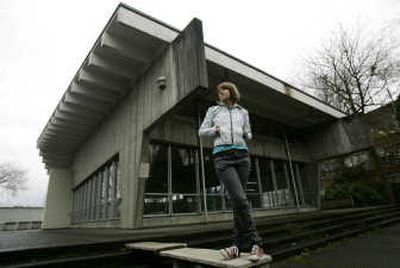Student wants to save UW reactor site

SEATTLE – Perhaps it should be called Radiation Ruins. Or the UW Hot House.
It’s an odd relic – a University of Washington building that once housed a nuclear reactor. Now, a UW graduate student is hoping to preserve it by nominating it to the National Register of Historic Places.
The building is unusual, perhaps unique in that the reactor was surrounded by glass walls so that students could peek in. Many students walking past the empty building these days on their way to the gym or to class have no idea of its history.
But it’s unclear whether the application, by architecture student Abby Martin, will be heard in time. The earliest that the state Department of Archaeology and Historic Preservation would consider her nomination would be July.
And the UW plans to demolish the building sometime this summer.
Opened in 1961, the reactor was built to train and educate students. It had a tiny output compared with reactors built to generate household power. The glass and concrete building was designed by Northwest architects Wendell Lovett, Gene Zema and Daniel Streissguth.
“The building is small, but its dynamic form embodies the forward-looking spirit of its time,” Martin wrote in her application. “It expresses the post-WWII optimism for nuclear technology that has left an undeniable impact on our recent past.”
In 1972, there was a small leak of plutonium dust during an experiment. Officials tried to cover residual radiation in the floor with new paint and tiles, but those were later removed.
The reactor stopped operating in 1988, and the fuel rods were removed in the years that followed. The building sat idle until 2006, when UW officials secured state funding to finish demolishing the reactor and decontaminate the building. Federal nuclear officials declared the building safe and clean last fall.
Martin, 25, said she first came across the building when she was working on a photography project. As she researched its history, she was struck by its unusual architectural style and by the historical significance of what once went on inside.
But Martin may face an uphill battle to save the building. For one thing, buildings that are less than 50 years old need an exemption to be listed on the national register.
And UW officials have shown little enthusiasm for keeping it.
Alan Nygaard, a director in the UW’s capital projects office, said while there are no specific plans for the site, the idea is to eventually construct another building there.
“Because of its location and structure, reuse would be pretty impractical,” Nygaard said. “Building locations are at a premium on the campus.”
But Michael Houser, an architectural historian in the state’s Department of Archaeology and Historic Preservation, said he believes Martin’s application has “a lot of merit” because of the architecture and the opportunity to educate people about nuclear history.
If the department decides to add the building to a state historic register, it would make a recommendation to the National Register of Historic Places.
Authorities in Washington, D.C., would then conduct a second review.
But even a national designation is only honorary – can’t prevent a determined landowner from demolishing a building.
“All we can do is document its history, raise its profile and hope the powers that be do the right thing,” Houser said.
Martin said the structure – once called the Nuclear Reactor Building but since renamed the More Hall Annex – could be used as a small nuclear museum or as a place to display art or technology.
“It’s a good opportunity to think about attitudes from the past,” Martin said. “The building shouldn’t just go without any thought, and without anyone ever knowing it was there.”